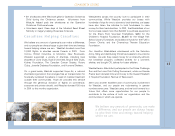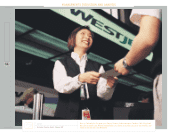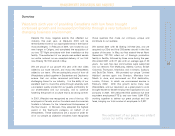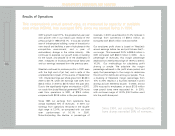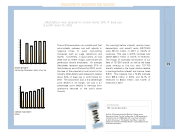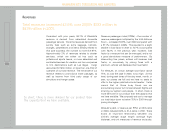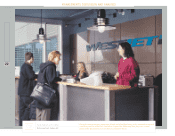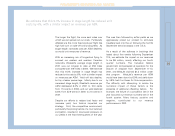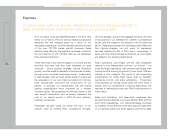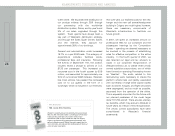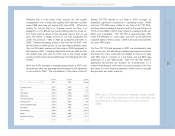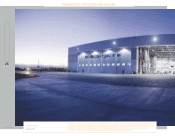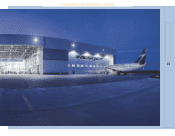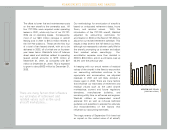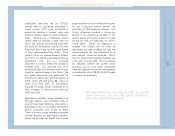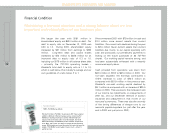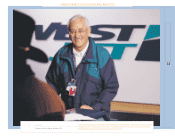Westjet 2001 Annual Report Download - page 25
Download and view the complete annual report
Please find page 25 of the 2001 Westjet annual report below. You can navigate through the pages in the report by either clicking on the pages listed below, or by using the keyword search tool below to find specific information within the annual report.
23
The longer the flight, the more seat miles over
which we can spread out our costs. Particularly
affected are the more fixed costs per flight like
high fuel burn on take-off and landing fees. As
stage length increases cost per ASM declines,
as would unit measures of revenue.
With an increasing mix of longer-haul flying to
connect our eastern and western Canadian
networks, WestJet’s average stage length in
2001 was our longest to date at 458 miles
compared with 419 miles in 2000. We estimate
that this 9.3% increase in stage length has
reduced unit costs by 6%, with a similar impact
on revenues per ASM. Yield will also decline,
but by a lesser percentage. Mainly due to our
increased stage length, WestJet’s revenue per
ASM decreased 8.0% in 2001 to 16.0 cents
from 17.4 cents in 2000, and our yield declined
6.6% from 22.9 cents in 2000 to 21.4 cents in
2001.
Despite our efforts to reduce load factor and
increase yield, two factors impacted our
strategy. First, the competitive environment,
particularly the pricing tactics of a now bankrupt
competitor, resulted in downward pressure on
our yields in the first three-quarters of the year.
This was then followed by softer yields as we
aggressively priced our product to stimulate
travellers back into the air following the horrific
September terrorist attacks in the U.S.A.
As a result of the softness in bookings that
lasted about five weeks following September
11th, we estimate the impact on our revenues
to be $8 million, mainly affecting our fourth
quarter numbers. The Canadian federal
government compensated all operators for the
closure of airspace from September 11-13,
2001, and WestJet claimed $1.3 million under
that program. WestJet’s revenue per ASM
would have been down by 6.9% and yield down
by 4.9% had it not been for this compensation.
The difficulty with attempting to isolate the
numerical impact of these factors is the
presence of additional offsetting factors. For
example, the failure of a competitor late in the
year favoured our revenue numbers late in the
fourth quarter. Many factors, positive and
negative, contributed to our revenue
performance in 2001.
We estimate that this 9.3% increase in stage length has reduced unit
costs by 6%, with a similar impact on revenues per ASM.
MANAGEMENT’S DISCUSSION AND ANALYSIS


